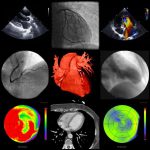Patient: I want to treat my Diabetes.
Doctor: Why do you wish to treat Diabetes?
Patient: To normalize my glucose levels.
Doctor: Controlling glucose is how we treat Diabetes and not why we treat Diabetes. WHY do you wish to treat Diabetes?
Patient: To prevent complications affecting various organs, I guess.
Doctor: That is correct. The goal of treating Diabetes is to prevent complications which may affect the eyes, heart, kidney, liver, and feet. Diabetes also affects various other organ systems. For instance, the deleterious effects of Diabetes on the immune system make people prone to infections like tuberculosis.
I often have this conversation with my patients, as it helps both the patient and me to focus on the main goal of treating Diabetes, that is the prevention of complications. In this article, I will focus on the eye. The damaging effects of Diabetes on the retina of the eye, also called diabetic retinopathy, are today one of the most important causes of preventable blindness worldwide.
As light enters the outer dome of the eye called the cornea, its entry is regulated like a camera shutter. The light passes through the lens and a medium called the vitreous to land on a vertical walled carpet called the retina. The bristling layers on the inner wall of the retina pick up the light signals. More complex inner cells condense various features such as the intensity of light and the type of color. The innermost layer of this carpet condenses the information and relates it through nerve fibers, as electrical signals to the brain which processes it. This process allows us to see all the elements of light and color. The spectacular sunrise, the dazzling rainbow, the dazzling display of the sunset sky, and the blackness of the night are all perceived thanks to this visual pathway.
Importantly, almost every part of this pathway can be damaged by Diabetes. However, it is the retina that suffers most commonly. And just as light passes into the retina, so can the eye doctor look into the retina and see the extent of the damage.
Indeed, among all the diabetic complications, retinopathy is the only one that can directly be seen by our eyes and directly assessed. Fortunately, all the Diabetes-related eye problems can be diagnosed and treated thanks to the “magic” of modern medicine as we discuss in this issue of Diabetes Health.
Before I end, I would like to touch upon a little-known aspect of the eyes. In the complex carpet of the retina of the eye resides a little cell called the retinal ganglion cell. These cells are relatively a more recent discovery. They relay information to the brain in a different manner, that is, just as light and dark signals. More importantly, they take an alternate pathway in the brain and thus allow many blind people to differentiate between day and night. In other words, these gang cells help to set up our biological clock. This biological clock does not simply regulate our sleep-wake cycle, but it also helps regulate our orchestra for various activities of the day. The release of the cortisol hormone from a gland called the adrenal to help us with energy during the day and the glucose production by the liver at night, the higher heart rate in the morning and the lower resting heart rate when we sleep, are all orchestrated by the biological clock.
Disruption of the biological clock can worsen glucose control and increase the risk of heart disease as well as other illnesses. We need a good biological clock, one that endows a restful sleep, a clock that is not disrupted by jet lags, evening caffeine, and midnight snacking, to help us live healthier and longer. And remember, the eyes are the most important input that our biological clock needs, and we need to protect them from illness.
In this issue of Diabetes Health, we help you take care of your eyes by giving you access to knowledge about prevention, diagnosis, and treatment of Diabetes- related eye disease. Additionally, of course, we have our regular features on diet, physical activity, technology, and therapy to help you manage your Diabetes with the right information. So that your inner eye can also “see” the light of knowledge to set you on the path to a healthier life! Read on!















